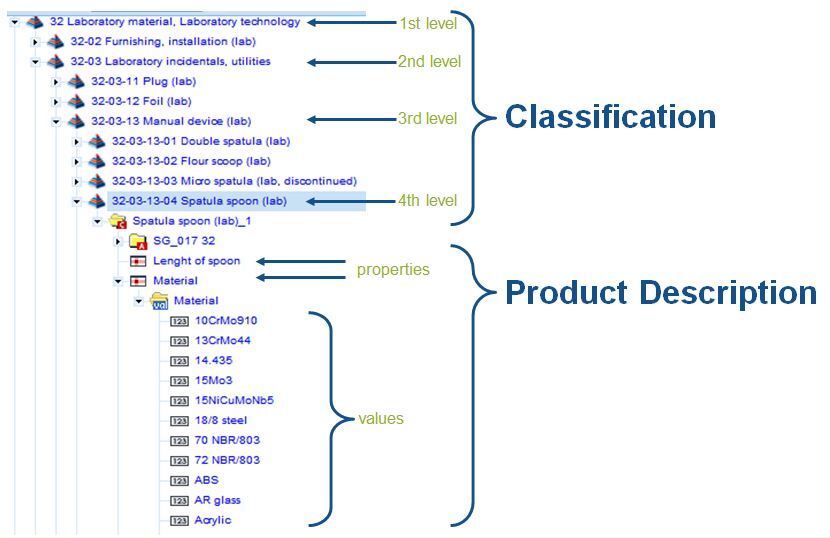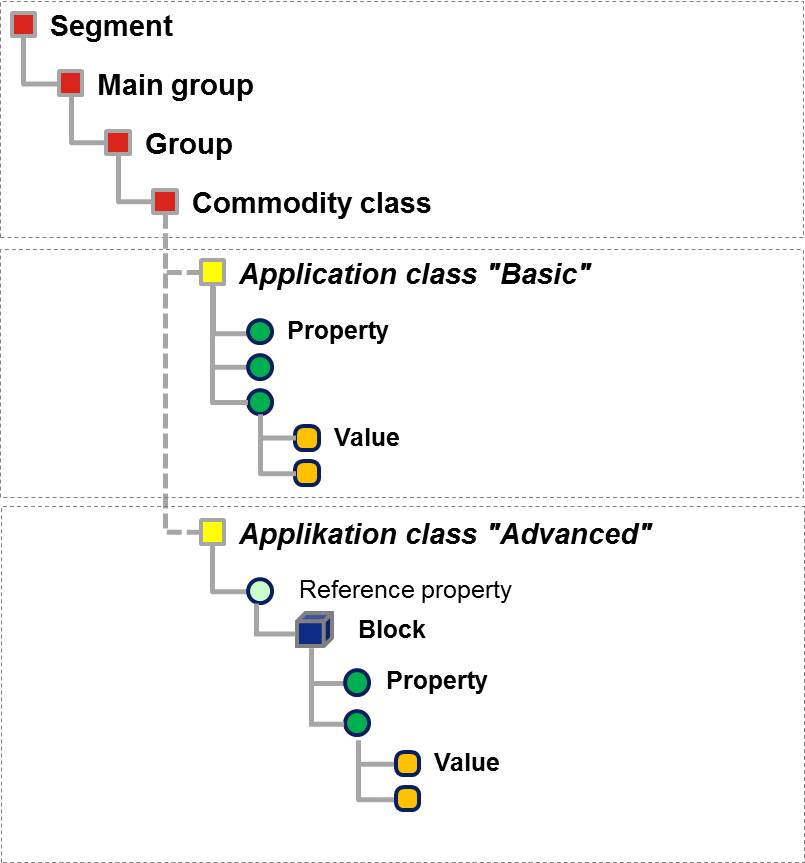Structure and structural elements
List of structural elements
ECLASS consists of the following structural elements (SE):
| Type of SE | Abbreviation of SE | Definition of SE | Type of SE Code | Exists in BASIC | Exists in ADVANCED |
|---|---|---|---|---|---|
| Classification Class | CC | A product group identified by a preferred name and an eight-digit coded name that represents the four-level classification structure | 01 | Yes | Yes |
| Property | PR | A characteristic of a class | 02 | Yes | Yes |
| Value | VA | A specification of a characteristic | 07 | Yes | Yes |
| Unit | UN | Standardized unit of measure | 05 | Yes | Yes |
| Keyword | KW | An alternative name of a class | Z5 | Yes | Yes |
| Synonym | SY | An alternative name of a property | Z6 | Yes | Yes |
| Value List | VL | A restrictive list of valid specifications of a property | 09 | Yes | Yes |
| Application Class | AC | Class that comprises all characteristics described by properties | 01 | No | Yes |
| Aspect | AS | Sub-class of an application class that comprises all properties describing a certain aspect of a product, not the product itself, e.g. packing information | 01 | No | Yes |
| Block | BL | Sub-class of an application class that comprises all properties describing a certain part of a product | 01 | No | Yes |
| Reference Property | RP | Property that references a block | 02 | No | Yes |
| ... | No | Yes |
ECLASS structure
ECLASS consists of a four-level hierarchy of classification classes (see class structure).
The fourth level, the commodity class or product group is then further described with the help of properties and property values. Properties and values form the basis for the product description. See also figures 1 and 2 for an example:

Figure 1: the ECLASS tree structure.

Figure 2: Example of the ECLASS tree structure.
With ECLASS 7.0 a BASIC and an ADVANCED version were distinguished for the first time. In order to implement this, two different Application Classes were established: a BASIC Application Class and an ADVANCED Application Class.
In the BASIC Version only the BASIC Application Class is available. But it is not visible to the BASIC user, as to every Classification Class exactly one Application Class is assigned that contains all properties to describe the product class.
In the ADVANCED version an optional ADVANCED Application Class might be additionally assigned to the Classification Class. As this is relevant for the ADVANCED user, both BASIC Application Class (mandatory) and an additional ADVANCED Application Class (optional) are part of the ADVANCED version.
The following figure shows two Application Classes for one Classification Class. In the ADVANCED Application Class, a Reference Property opens a Block that consists of descriptive properties.

Figure 3: BASIC AC and ADVANCED AC - High Level. (c) Class.Ing
Pages in category "Structure and structural elements"
The following 17 pages are in this category, out of 17 total.